Youth Care Treatment Center and school has helped teens with autism all over the United States for 30 years. Our unique approach is based off of solid morals and beliefs to help adolescents be successful in turning their lives around.
Understanding Autism
Learn about autism
As defined by the American Psychiatric Association (APA), autism spectrum disorder (ASD) refers to a classification of mental illness that involves persistent impairment in social interaction and communication, as well as restrictive, repetitive patterns of interests, behaviors, and/or activities. The presence of these deficits must be first displayed during childhood and while they will vary in severity, they will inevitably impair or limit a child’s daily functioning. In addition to the previously mentioned difficulties, the fifth edition of the Diagnostic and Statistical Manual of Mental Disorders notes that individuals with autism spectrum disorder may also experience language impairment, intellectual impairment, and motor deficits. Furthermore, self-injury may also exist and disruptive and challenges behaviors may occur. Adolescents with ASD may also experience heightened levels of depression and anxiety. While there is no cure for autism spectrum disorder, early interventions and ongoing treatment can assist in allowing children and adolescents to live full, productive, and happy lives.
Statistics
Autism statistics
The Autism Society and the APA both report that autism spectrum disorder affects approximately 1% of the population, with the APA adding that this statistic reflects its prevalence in both the child and adult population. Additionally, in 2014, the Centers for Disease Control and Prevention (CDC) reported that the prevalence of autism in the United States is the equivalent of approximately one in every 68 births.
Causes and Risk Factors
Causes and risk factors for autism
While there is no definitive cause for the development of autism, a number of factors are said to play a role in its occurrence. Most researchers believe that genetic and environmental factors can cause the development of ASD. Consider the following:
Genetic: While one’s genetic makeup is believed to have a role in the development of autism spectrum disorder, the rates of heritability have ranged in estimates from as low as 37% to as high as 90%. The APA states that approximately 15% of autism spectrum disorder cases are associated with a known genetic mutation.
Environmental: The APA notes that there are some nonspecific environmental risk factors that may impact the onset of autism spectrum disorder. Such factors may include fetal exposure to valproate (a chemical used in certain medications used to treat epilepsy and bipolar disorder), advanced parental age, and low birth weight.
Risk Factors:
- Low birth weight
- Having a biological family member with autism spectrum disorder
- Advanced parental age
- Fetal exposure to valproate
Signs and Symptoms
Signs and symptoms of autism
The symptoms of autism spectrum disorder are most commonly recognized during an individual’s second year of life, or between the ages of 12 and 24 months. However, if deficits (e.g. developmental delays) are severe, they may be recognized prior to 12 months of age. The behavioral characteristics of autism typically present in early childhood, during times when children are commonly beginning to engage in social interaction, are speaking more, and are beginning to attend school. That being said, the specific symptoms that may be displayed by a child who has autism will vary in type and intensity, but may include the following:
Behavioral symptoms:
- Ritualized patterns of behavior
- Repetitive movements
- Repetitive use of objects
- Repetitive speech
- Inability to adhere to routines
- Abnormal approach to social interactions
- Failure to engage in back-and-forth conversation
- Inability to adjust behaviors in an appropriate manner in various settings
- Self-harming behaviors (e.g. biting oneself, banging one’s head, etc.)
Physical symptoms:
- Abnormal gesturing
- Abnormal body language
- Failure to make or maintain eye contact
- Lacking facial expressions
- Eating difficulties
- Sleeping difficulties
- Inability to maintain appropriate hygiene
Cognitive symptoms:
- Rigid thinking patterns
- Restricted or fixated interests that are excessive in intensity or focus
- Attention difficulties
- Hyperactive responses to sensory input
- Hindrances in learning abilities
- Significant aversion to change
Psychosocial symptoms:
- Minimal emotional affect
- Difficulty understanding relationships
- Deficits in social-emotional reciprocity
- Absence of interest in other children
- Anxiety
- Depression
Effects
Effects of autism
The lasting effects of autism spectrum disorder will depend on the severity of the child or adolescent’s symptoms, as well as the type of treatments he or she is receiving. If appropriate treatment is not received or early interventions are not made, children and adolescents with ASD may be susceptible to experiencing the following:
- Inability to live independently
- Requiring ongoing support for activities of daily living
- Onset of mental health disorders such as depression or anxiety
- Academic failure
- Lack of interpersonal relationships
- Social isolation
- Aggression
- Future poor psychosocial functioning in adulthood
Co-Occurring Disorders
Autism and co-occurring disorders
Many children and adolescents who have autism spectrum disorder may also grapple with other mental health conditions. As noted by the APA, some of the most common co-occurring mental health conditions in those with autism can include:
- Intellectual impairment
- Language disorder
- Attention-deficit/hyperactivity disorder (ADHD)
- Developmental coordination disorder
- Anxiety disorders
- Depressive disorders









